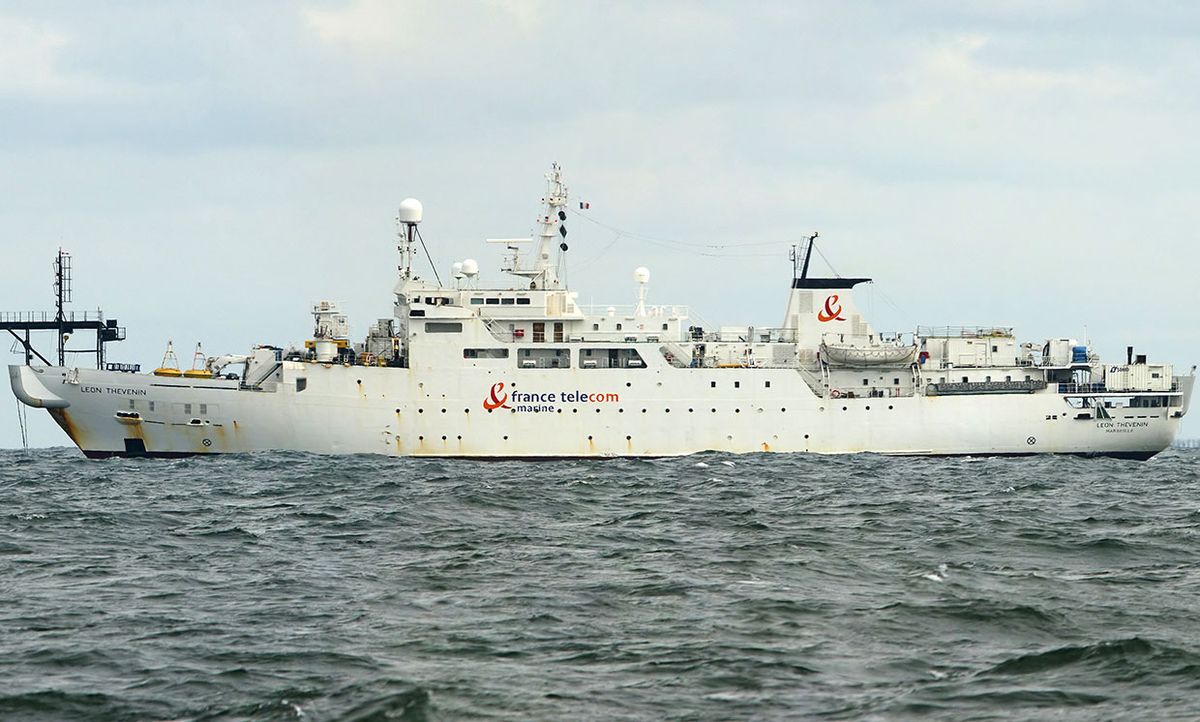A clock in South Africa is counting down the seconds until a pair of broken cables are expected to go back in service. Every few hours, the service provider TENET, which keeps South Africa's university and research facilities connected to the global Internet, tweets updates.
The eight-year-old West Africa Cable System (WACS) submarine cable, which runs parallel to Africa's west coast, broke at two points early on 16 January. That same day, an 18-year-old cable called SAT-3 that runs along the same route also broke.
Cable breaks, whether due to accidents or sabotage, are well-known risks, so most Internet service providers lease capacity on alternate routes as a backup, says Paul Brodsky, senior analyst at TeleGeography. Internet speeds in South Africa dropped after the break, but most services had backups and were able to maintain connections.
TENET restored its overseas connections by switching to an alternative 80-gigabit-per-second service on the SEACOM and EASSy cables on Africa's east coast. "The latency ... increased due to this failover, but there are currently no reported issues of this being detrimental to connectivity," a representative of TENET said on 30 January.
If this break had occurred 15 years ago when the older broken cable was South Africa’s only direct, high-capacity international submarine cable connection, the country would have been almost completely cut off from the rest of the world.
The likely cause of the breaks was an undersea earthquake of magnitude 5.6 that took place off Ascension Island in the Atlantic, which occurred about two hours before the SAT-3 and WACS cables failed. The failures were in Congo Canyon which extends about 200 kilometers west from the mouth of the Congo River. Submarine earthquakes can trigger cable-snapping underwater landslides hundreds of kilometers away, and Congo Canyon has the strongest turbidity currents ever measured.
Six cables run north from South Africa—three on the west coast and three on the east coast—and most connect to coastal African countries along the way. That's a big improvement from the minimal service of the early 2000s. South Africa receives the largest share of the traffic, and Brodsky says one of the four fiber pairs in WACS runs express between South Africa and Europe. Countries north of the mouth of the Congo River did not lose their connections.
Most South African carriers had route diversity, with capacity available on two or more cables. One, Afrihost, had the bad luck of picking the SAT-3 cable as its main backup to the WACS cable. "It was unprecedented that two completely geographically separate cables run by completely separate companies would fail within hours of each other," Afrihost CEO Gian Visser told Business Times. The company’s emergency capacity on a third cable initially was insufficient because other ISPs had to reroute their own traffic after the breaks.
The creation of regional Internet exchanges appears to have helped matters. "Localization of content and local exchange of traffic in South Africa mitigated effects of the breaks," Brodsky says. However, international Internet speeds are expected to be slow until the cables are repaired.
Repairing the breaks requires sending a specially equipped cable ship to the site, where it must grapple the broken cable ends and haul them on board for repairs. With the boom of submarine cable deployment in recent years, some 46 cable ships are now deployed around the world.
Fortunately one of them, the Leon Thevenin, was in Cape Town Harbor at the time of the breaks. After loading equipment and enduring days of weather delays, it sailed on 22 January with a crew of 54. TENET reported the ship reached the site of the breaks late on 28 January, and is now tweeting reports of repairs estimated to be finished by the end of Saturday, 8 February.
A new generation of submarine cables is in the works, including four expected to reach South Africa in the next three years, each designed to provide more capacity than the present six cables combined now provide. Google Cloud, with its global network of submarine cables, plans to complete the Equiano cable from Portugal to South Africa by 2021; it will have about 20 times the transmission capacity of the most recent cable connected to Africa. Google does not yet have a cloud data center in Africa, but the Equiano cable could pave the way.
Meanwhile, the South Atlantic Express 1 and 2 cables are expected to begin service in the second and third quarters in 2022, with design capacities of 108 and 72 terabits per second. And Facebook is discussing Project Simba to lay a cable to South Africa, but has yet to announce details.
Editor’s note: Updated 4 February 2020 to state that 15 years ago, the SAT-3 was the only direct, high-capacity undersea cable. SAT-2 was operational, but had nowhere near the capacity of SAT-3.
Jeff Hecht writes about lasers, optics, fiber optics, electronics, and communications. Trained in engineering and a life senior member of IEEE, he enjoys figuring out how laser, optical, and electronic systems work and explaining their applications and challenges. At the moment, he’s exploring the challenges of integrating lidars, cameras, and other sensing systems with artificial intelligence in self-driving cars. He has chronicled the histories of laser weapons and fiber-optic communications and written tutorial books on lasers and fiber optics.



